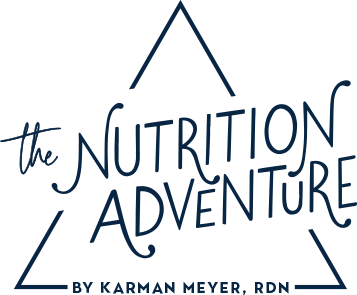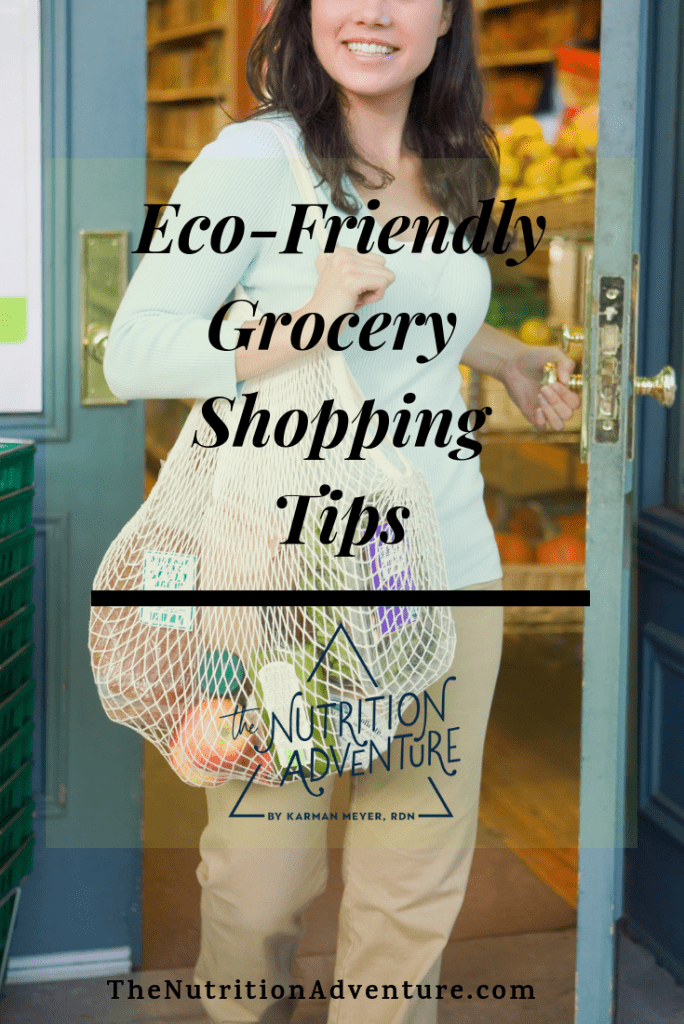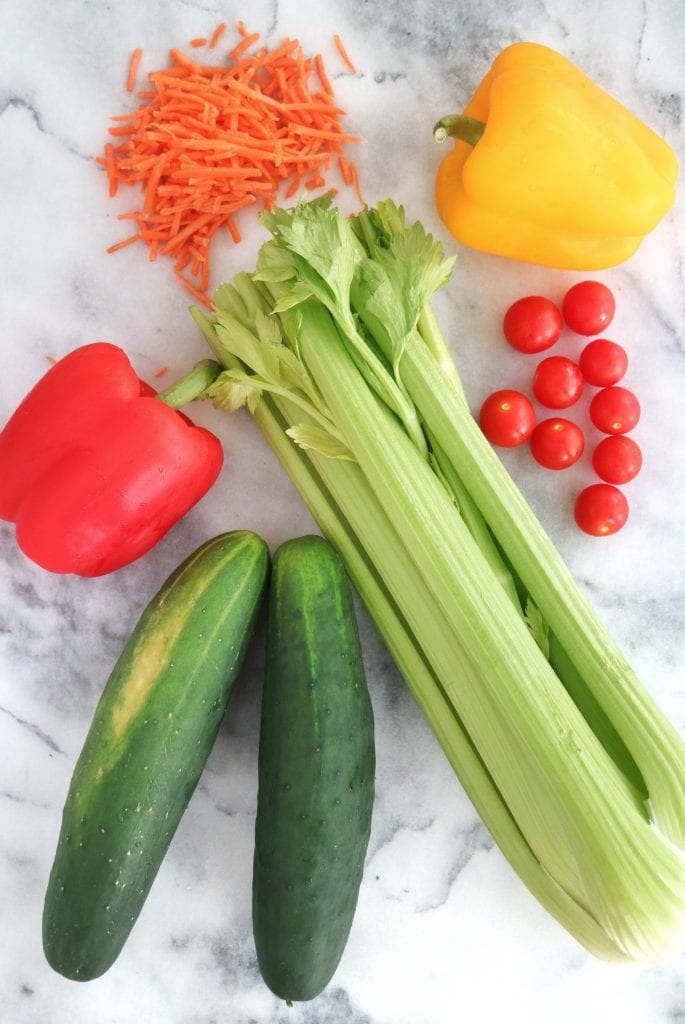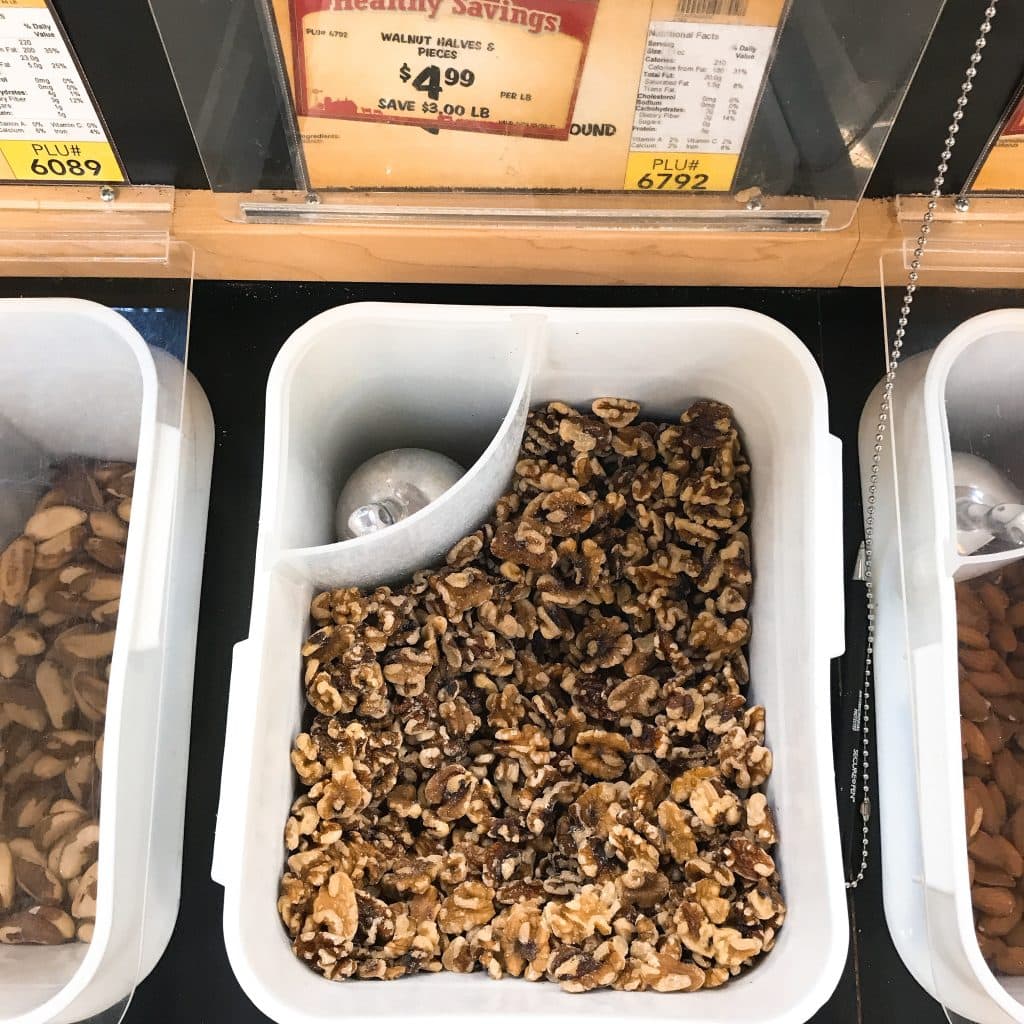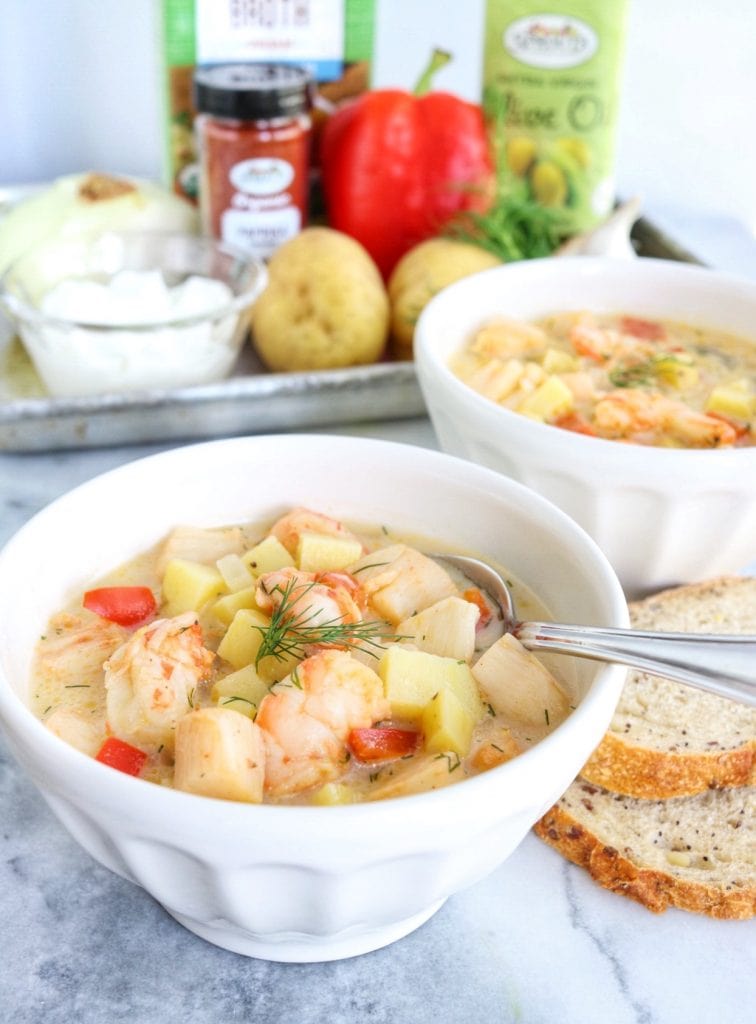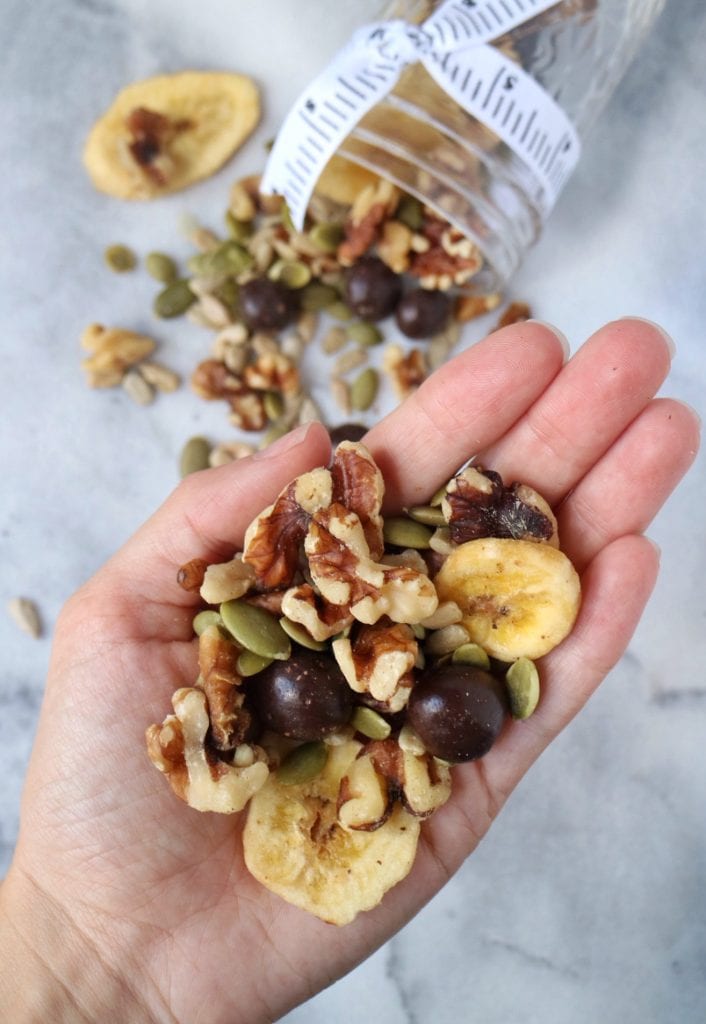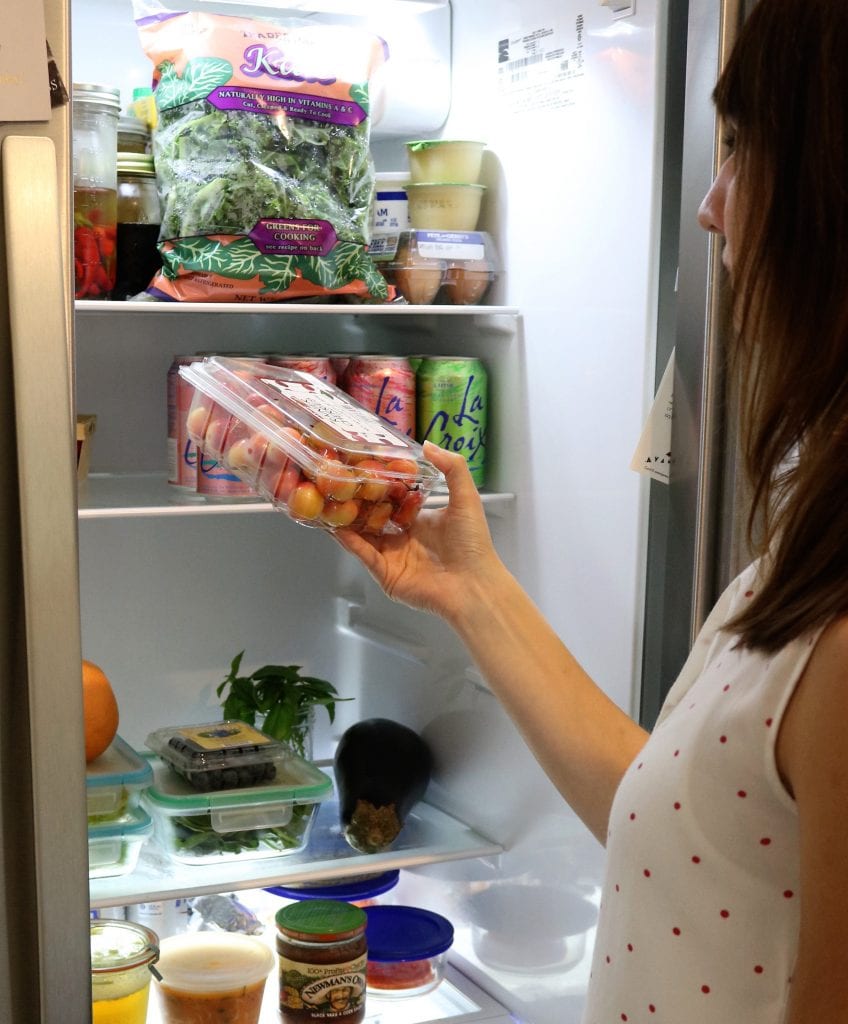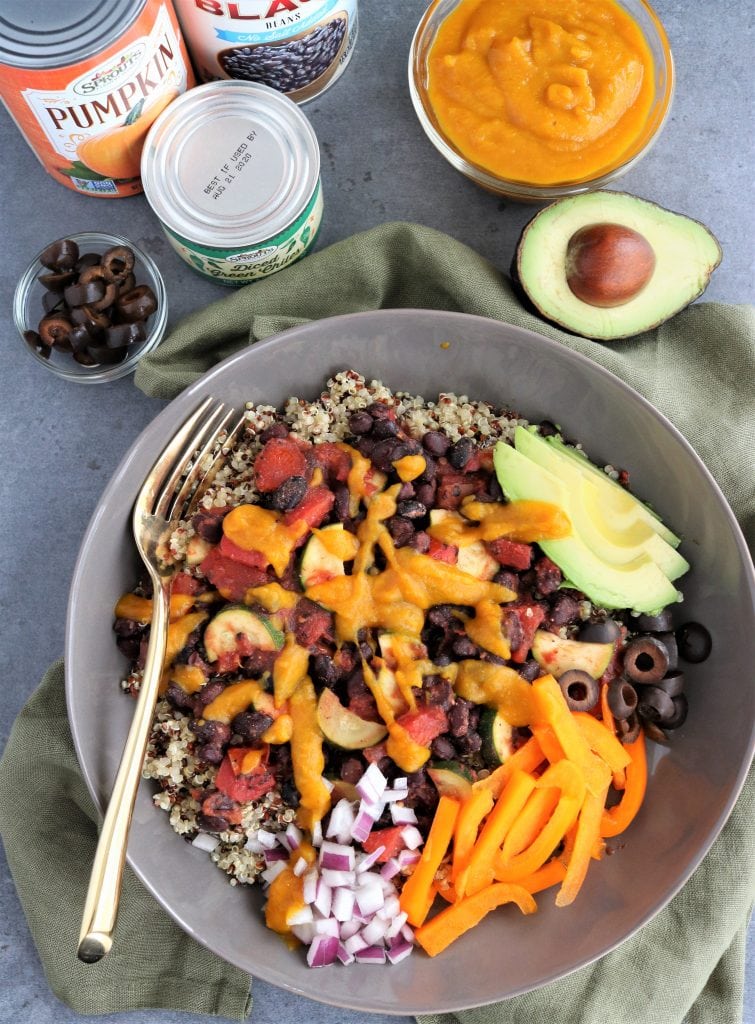Eco-Friendly Grocery Shopping Tips
Registered Dietitians share their best eco-friendly grocery shopping tips to reduce food & packaging waste!
This post contains affiliate links.
April is Earth Month and today is Earth Day so what better time to share some easy, eco-friendly grocery shopping tips?! Of course these tips go beyond Earth Day and even Earth Month–these are practices we should be using year-round.
In the U.S., we waste about 40% of all food. I certainly have room for improvement when it comes to minimizing food waste and packaging waste. Being a more eco-conscious consumer is a practice and it takes continual effort and learning. But I believe that small changes can lead to a big impact and if we all can start making small changes, however it best fits our lives, then we can make an even bigger, positive impact on our environment. Plus, by reducing food waste and implementing some of the tips in this post, you can save money, too. Cha-ching!
Let’s jump in…..
1. Use reusable shopping bags
Lisa Andrews of Sound Bites Nutrition says that bringing your own shopping bags is a great place to start for a more eco-friendly grocery shopping trip.
One of the other reasons I love using my reusable grocery bags (besides them being wayyyyy cuter than plastic bags!) is that I can tote more stuff in one bag, meaning fewer trips back and forth from the car. You will seriously save yourself time loading and unloading groceries at home when you use reusable shopping bags. Most grocery stores have these reusable shopping totes available near the checkout line now, so if you don’t have one already, pick one up the next time you head to the store and skip the plastic!
There’s also this nifty and convenient shopping bag system that Bonnie Nasar of Nasar Nutrition shared called Trolley Bags. She says she never goes grocery shopping without them!
BONUS: Many grocery stores take $0.05-$0.10 off of your grocery bill per reusable bag used!
2. Use reusable produce bags or skip the bag
Lindsey Joe of The Meal Planning Method recommends asking yourself “Do I really NEED a bag for this?” when shopping for produce. “This can help you from using those thin produce bags excessively. For example, you don’t REALLY need a produce bag for bananas or onions. Let them be free!”, says Lindsey.
I take my reusable produce bags along and use them primarily for produce found in the cooler section like leafy greens, cabbage, cauliflower, radishes, etc. For produce like zucchini, bell peppers, pears, apples, and tomatoes, I skip the bag altogether and just make sure I give them a good washing and scrub before using!
[bctt tweet=”6 simple steps for a more #ecofriendly grocery shopping trip + tips from Registered Dietitians!” username=”KarmanRD”]
3. Shop the bulk department
The bulk department is where you can find nuts, beans, flours, grains, dried fruits and more, minus all of the packaging. While there are plastic bags available for weighing out bulk items, Jessica Sprio of JessicaSpiroRD.com suggest using your own re-usable container for toting bulk items home, like mason jars or small canvas drawstring bags. “Make sure to bring along an extra canvas bag or mason jar so the store can tare the weight”, says Jessica.
Rebecca Clyde from Nourish Nutrition Co. says she keeps reusable bags (like these) in her car so she has them on hand when heading to the grocery store. These bags will work for bulk items such as beans, rice, and nuts. Rebecca says, “I find these to be less expensive than prepackaged options too, and you can get just as much as you need. Plus, it’s easier to keep your pantry organized and clean when you shop bulk!”.
4. Sustainable seafood choices
Choosing sustainable seafood can help reduce the impact we have on the environment and our oceans. But how do you know if you’re making ocean-friendly seafood choices? The website SeafoodWatch.org can help! They have consumer guides for different regions of the country so you can choose the most sustainable seafood options no matter where you go, plus an app that locates restaurants and stores near you that serve ocean-friendly seafood.
Some stores, like Sprouts Farmers Market (client), are committing to sustainable seafood practices. Check out this recipe and post where I shared more about shopping for sustainable seafood at Sprouts.
Lauren Harris-Pincus of Nutrition Starring YOU says, “Look for sustainable seafood like Wild Planet Foods that was rated #1 in sustainability by Greenpeace. You’ll find eco-friendly, higher quality seafood with more omega 3’s and less mercury”.
5. Skip the individually packaged products
We live in a single-use society these days it seems. Just about everything we may use on a daily basis is available in one-time use packaging: coffee, sugar, nut butters, snack mixes, yogurt, even chicken breasts come individually wrapped inside larger packaging. Leanne Ray of Leanne Ray Nutrition says, “Instead of buying those individually packaged snack foods, buy in bulk or buy the larger size package and portion out into small jars or food storage containers as needed!”.
A good example of this and an easy switch to make is buying trail mix ingredients from the bulk section and creating your own at home rather than pre-packaged trail mixes. Store the trail mix in reusable plastic storage container or mason jar in the pantry.
Not only will skipping the individually packaged snacks and other foods save on packaging waste, it will also save you money!
6. Plan ahead & buy only what you need
There are numerous benefits to making a plan before going to the grocery store. Meal planning can help reduce food waste, save money, and it takes the stress out of deciding what to eat at each meal during the week. Having a meal plan in place can also have nutritional benefits when balanced meals are included.
Kellie Blake of NutriSense Nutrition has a “clean out the fridge night” to help reduce food waste. “We always use anything we have [in the fridge] the night before we’re going to grocery shop so we don’t waste food”.
Take inventory of what you have on hand before going shopping. Once you make your grocery list, stick to it and avoid impulse purchases. Judy Barbe of LiveBest suggests asking yourself, “do I need this or want this?”. She says, “Many people give fresh fruits and vegetables and dairy a healthy halo, thinking they should be eating more so they buy too much when the reality of the calendar doesn’t meet the purchases”.
This is such an important reminder! If you see pineapple on sale and think “Oh, I should be eating more fruit” but in reality, you may not take the time to cut it up once you get home, then the pineapple will go to waste. Or, you often buy the extra large plastic tub of spinach and always end up throwing the last of it away, then go for the smaller container. While we may have good intentions of eating more fruits and vegetables during the week, buying and then throwing them away doesn’t do anyone any good.
This is where canned or frozen fruits and vegetables are excellent options to help us meet our recommended fruit and vegetable intake, while also minimizing food waste! P.S. Did you see this veggie-loaded recipe I made using canned tomatoes, green chiles, and pumpkin?
Kristina Todini of Fork in the Road agrees on the importance of meal planning. She says, “Reusable bags and shopping from the bulk section are great but do you no good if you overbuy and end up wasting food. Take a few minutes before your grocery trip to scan what you already have on hand and map out the week ahead’s meals and snacks to reduce food waste and take the stress out of mealtime”.
Need some help getting started with planning out your grocery shopping trips or with meal planning? Liz Weiss from Liz’s Healthy Table shared this free aisle-by-aisle Supermarket Shopping List and Lindsey Joe of The Meal Planning Method has several great tools and resources to offer those new to meal planning!
Get Started
Try making one or two of these changes to start, get comfortable with it until it becomes a normal routine, and then add on another eco-friendly practice. I’d love to know what you’re already doing at home to reduce food waste or packaging waste, so leave me a comment below! Know someone who would be interested in these tips? Please share this article with them!
